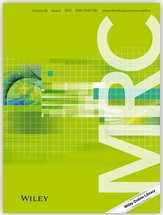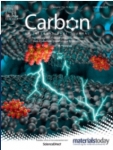A study concerning the image quality in electron paramagnetic resonance imaging in two‐dimensional spatial experiments is presented. The aim of the measurements was to improve the signal‐to‐noise ratio (SNR) of the projections and the reconstructed image by applying modulation amplitude higher than the radical electron paramagnetic resonance linewidth. Data were gathered by applying four constant modulation amplitudes, where one was below 1/3 (Amod = 0.04 mT) of the radical linewidth (ΔBpp = 0.14 mT). Three other modulation amplitude values were used in this experiment, leading to undermodulated (Amod < 1/3 ΔBpp), partially overmodulated (Amod ~ 1/3 ΔBpp) and fully overmodulated (Amod > > 1/3 ΔBpp) projections. The advantages of an applied overmodulation condition were demonstrated in the study performed on a phantom containing four shapes of 1.25 mM water solution of 2, 2, 6, 6‐tetramethyl‐1‐piperidinyloxyl. It was shown that even when the overmodulated reference spectrum was used in the deconvolution procedure, as well as the projection itself, the phantom shapes reconstructed as images directly correspond to those obtained in undermodulation conditions. It was shown that the best SNR of the reconstructed images is expected for the modulation amplitude close to 1/3 of the projection linewidth, which is defined as the distance from the first maximum to the last minimum of the gradient‐broadened spectrum. For higher modulation amplitude, the SNR of the reconstructed image is decreased, even if the SNR of the measured projection is increased.



